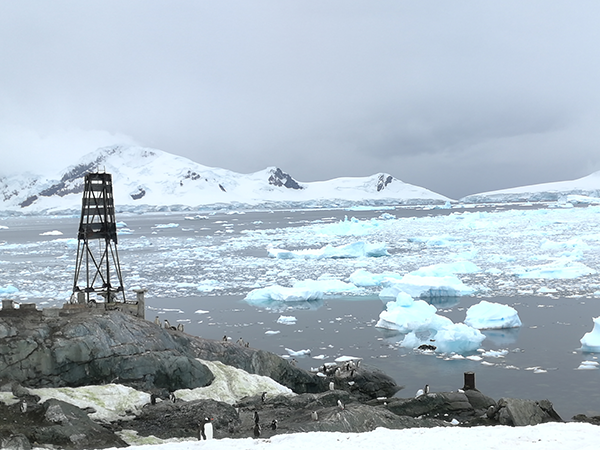The precipitation in West Antarctica, especially around the Antarctic Peninsula, exhibits large variability on the interannual time scale. In recent years, scientific research activities, tourism and fisheries have been experiencing remarkable growth there. Thus, understanding the variability of precipitation in West Antarctica, including the Antarctic Peninsula, is of substantial importance both for scientific and practical aspects.
As the strongest signal of interannual climate variability, El Nino exerts significant impacts on climate in the Antarctic, especially in the West Antarctic. However, a recent study indicated that the effect of ENSO (which stands for El Nino–Southern Oscillation and refers to the broader climate pattern comprising the phases of El Nino and La Nina) on precipitation in West Antarctica is not significant, which is inconsistent with its significant impact on the West Antarctic climate through modulation of the Amundsen Sea low pressure system via Rossby wave trains (atmospheric or oceanic waves that form as a result of Earth’s rotation).
In a paper recently published in
Atmospheric and Oceanic Science Letters, Prof. LI Shuanglin from the Institute of Atmospheric Physics at Chinese Academy of Sciences, and CHEN Xueyang and Dr. ZHANG Chao from the China University of Geosciences, Wuhan, China, clear up the impacts of different types of El Nino events on precipitation over West Antarctica and the Antarctic Peninsula, and explain the uncertain connection between the two.
Photo taken during Antarctica Scientific Expedition supported by the Chinese Academy of Sciences at Almirante Brown Antarctic Base in 2019 (Credit by LI Shuanglin)
"Previous studies show that precipitation over West Antarctica, especially the Antarctic Peninsula, is less correlated with El Nino. One possible reason is that these studies did not classify El Nino into its two known sub-types: EP [Eastern Pacific] and CP [Central Pacific] El Nino," explains Prof. LI
EP and CP events have similar impacts on precipitation over the Amundsen–Bellingshausen seas, but opposite impacts on that over the Weddell Sea, including the eastern Antarctic Peninsula, thereby cancelling each other out in terms of the precipitation response they induce. This of course then accounts for the uncertainty in ENSO's influences on precipitation over the Antarctic Peninsula.
"EP events force two branches of Rossby wave trains that propagate southeastward and converge in West Antarctica, which causes an anomalous anticyclone and cyclone over the Ross–Amundsen–Bellingshausen seas and Weddell Sea, respectively. Consequently, anomalous southerly winds occur over the Bellingshausen–Weddell seas, acting to decrease the amount of precipitation there. In comparison, only one weak and westward-shifted Rossby wave train is stimulated under a CP event, which induces an anomalous anticyclone and cyclone in the Ross–Amundsen seas and Bellingshausen–Weddell seas. Anomalous southerly winds reduce the precipitation over the Amundsen–Bellingshausen seas, while anomalous northerly winds increase the precipitation over the Weddell Sea," adds CHEN Xueyang.
Citation:
Xueyang Chen, Shuanglin Li, Chao Zhang, 2023. Distinct impacts of two kinds of El Nino on precipitation over the Antarctic Peninsula and West Antarctica in austral spring, Atmospheric and Oceanic Science Letters, 100387, https://doi.org/10.1016/j.aosl.2023.100387.
Media contact:
Ms. LIN Zheng
Email: jennylin@mail.iap.ac.cn
Tel: 86-10-82995053
http://english.iap.cas.cn/

